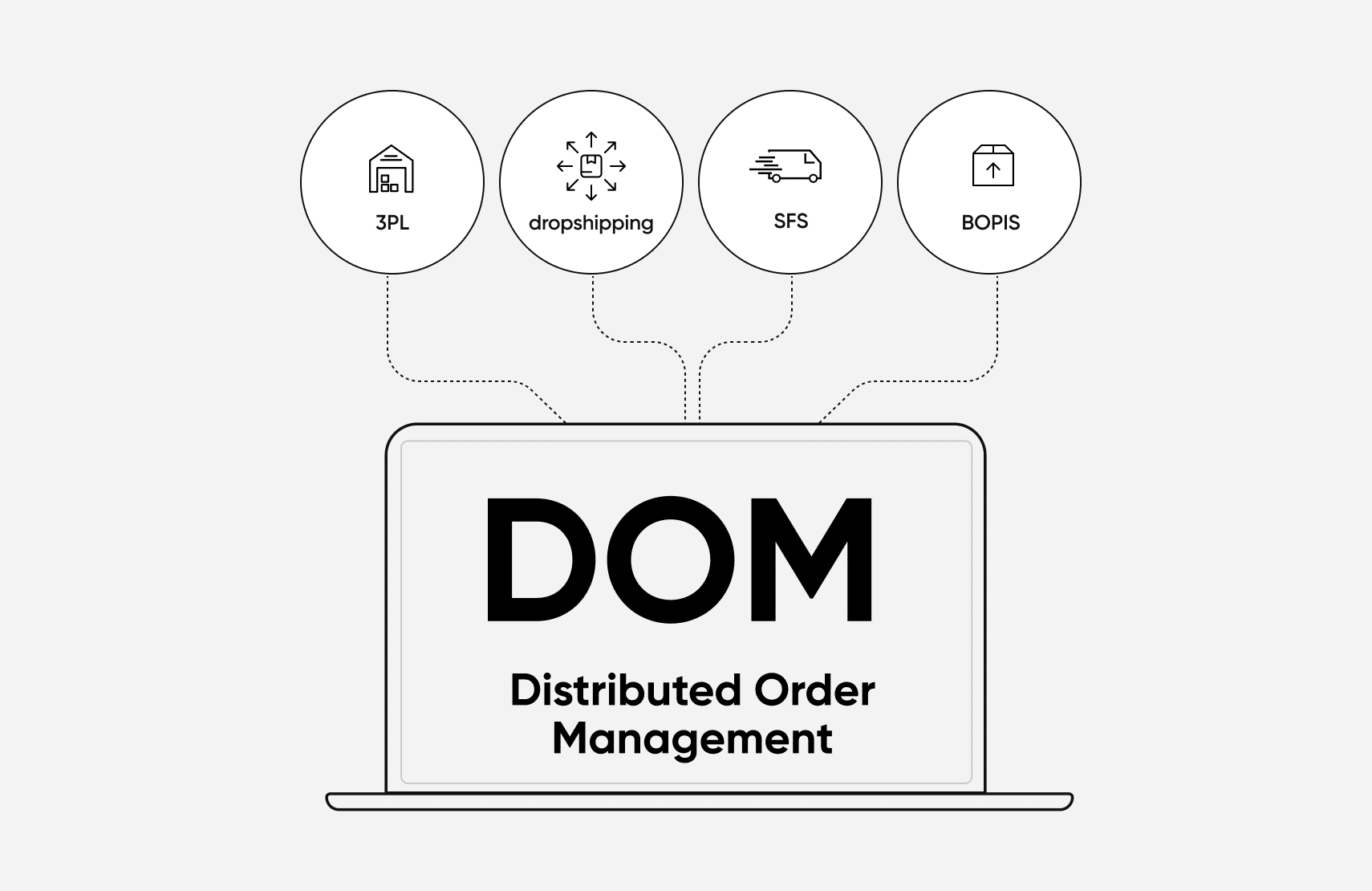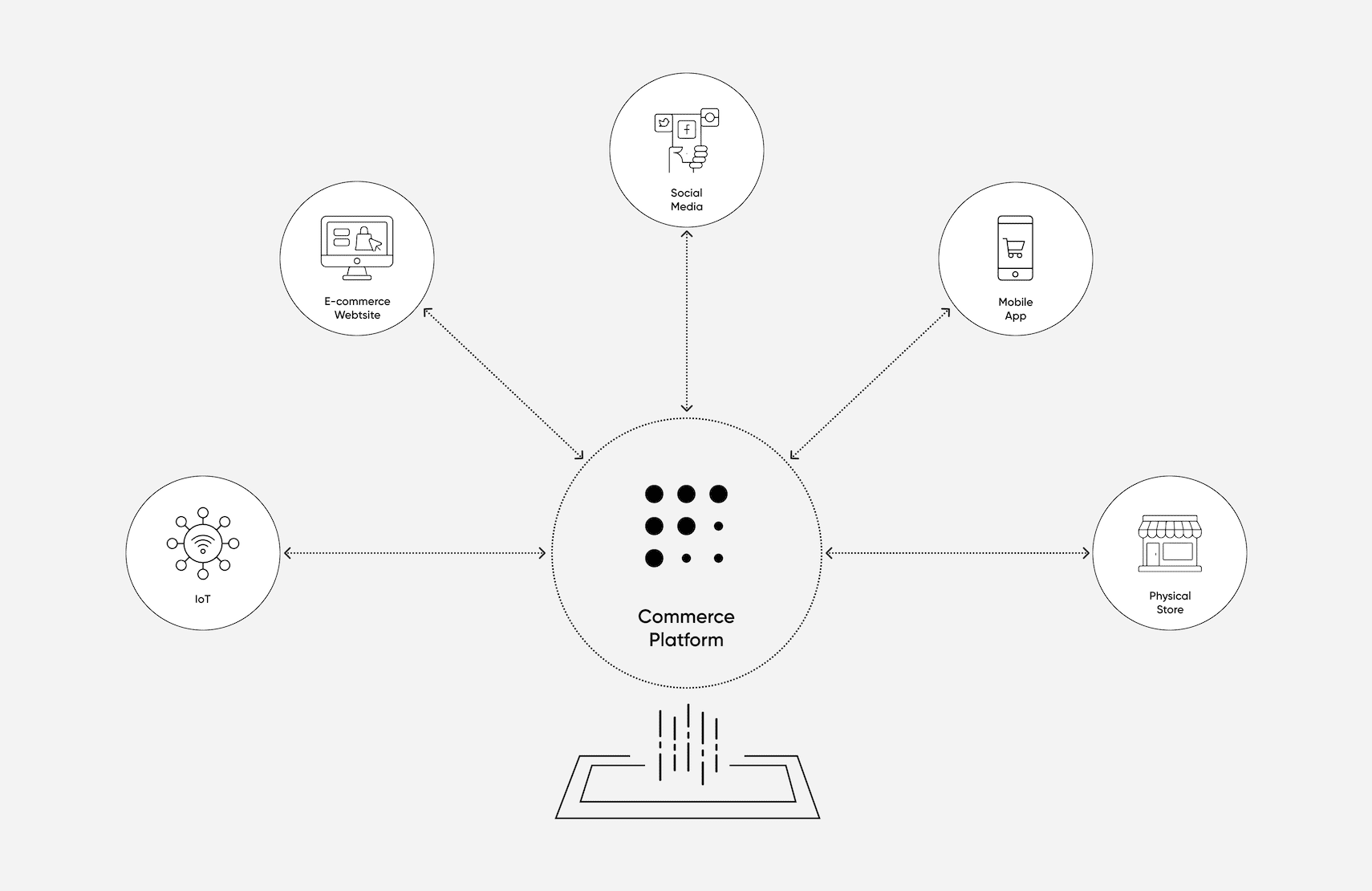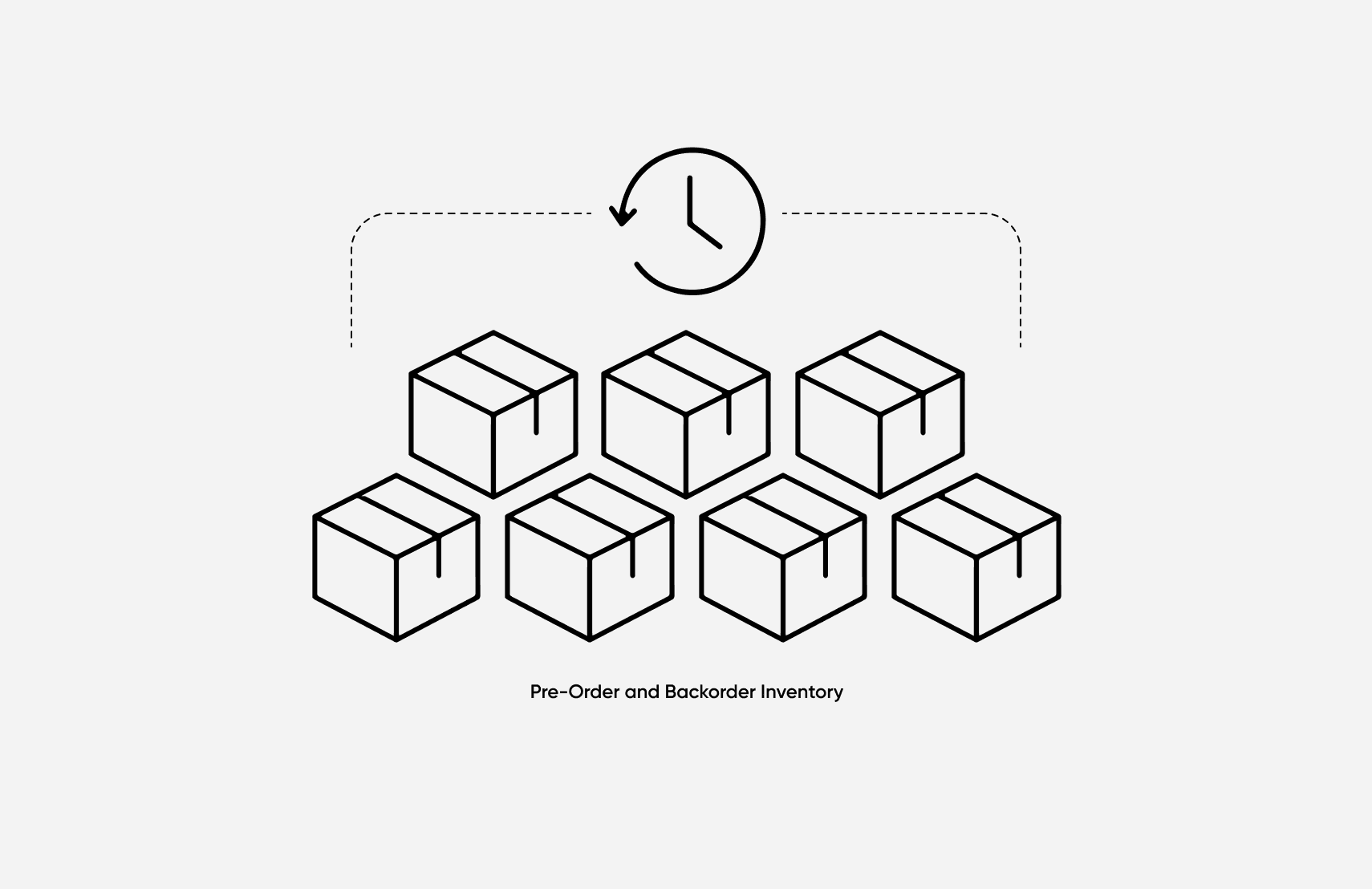How To Find the Right Order Management System (OMS): The Ultimate 2022 Guide to Streamlining Order Management
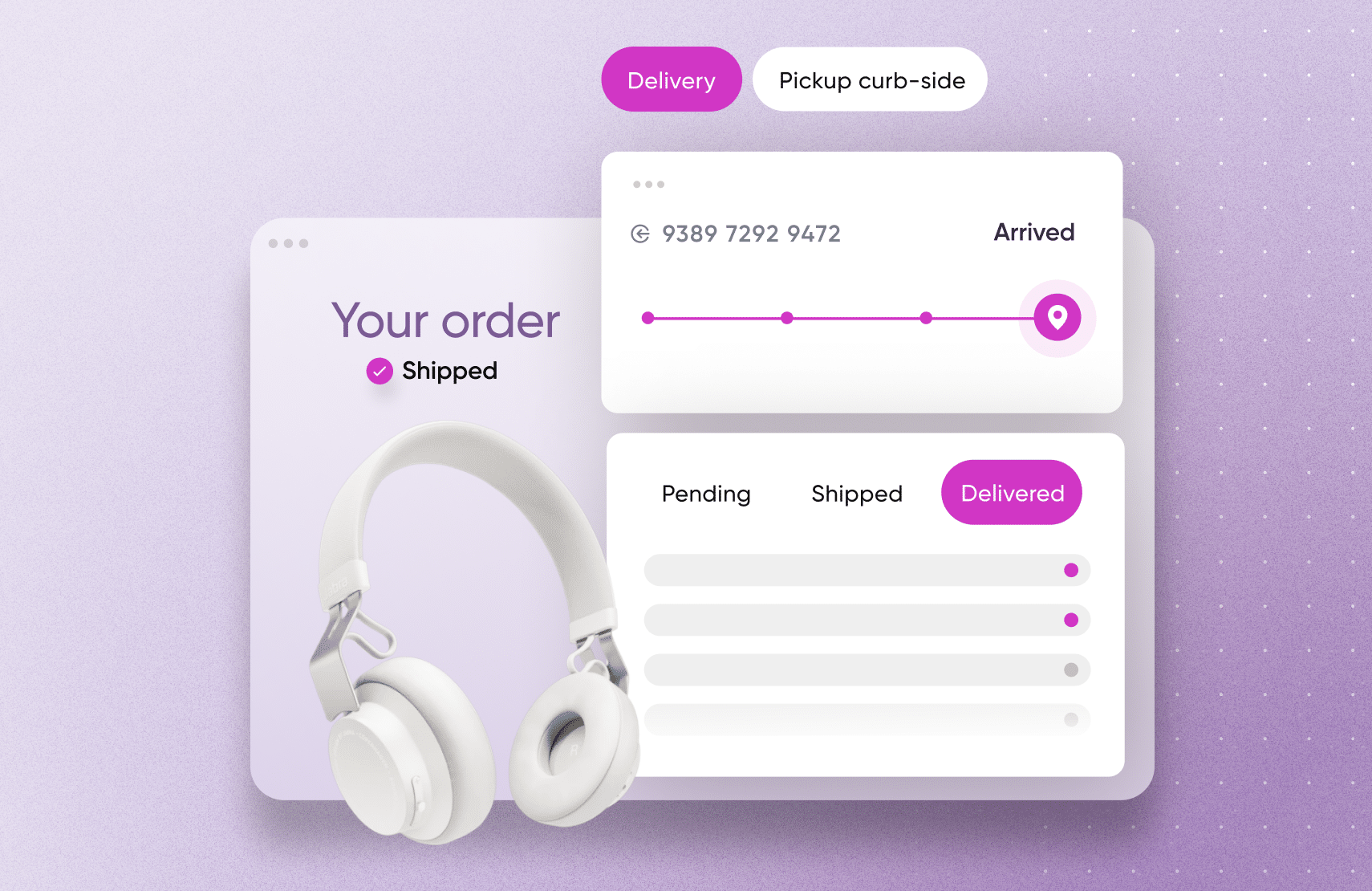
What Is an Order Management System?
An order management system (OMS) is software brands and retailers use to manage the order lifecycle. A modern OMS software solution powered by application programming interfaces (APIs) combines order management, inventory management, and order fulfillment capabilities to improve inventory visibility and streamline fulfillment workflows so products are shipped to customers seamlessly and without friction.
[toc-embed headline=”Overview”]
Overview
Truly great e-commerce experiences don’t end when customers place their orders. Now more than ever, buyers want smooth and speedy deliveries that soar above their expectations, create memorable fulfillment experiences, and deliver on brand promises. Companies that can adapt to increasingly demanding customer preferences and meet or exceed their expectations have an incredible opportunity to turn one-time buyers into repeat customers and advocates for their brands.
According to Narvar research, 72% of shoppers say on-time delivery is the main reason they’ll shop with a retailer repeatedly. Further research shows that 39% of shoppers will never shop with a company again if they have a poor delivery experience.
An order management system (OMS) is the technical tool e-commerce merchants use to manage orders, inventory, and fulfillment—three of the most critical functions required to get the right products to the right customers in a timely and efficient manner.
For mid-market and enterprise brands, a modern OMS takes the guesswork and the manual processes out of the order management function. It can help scale inventory accuracy and availability, reduce technical debt (or the cost of software development decisions that result in prioritizing speed over well-designed code), and streamline order management processes, which ultimately improves the speed and efficiency of the fulfillment process and creates a seamless experience for the customer.
In this complete guide on order management systems, we’ll discuss everything you need to know about OMS applications, including:
- What they are
- How they work
- Why they’re crucial for streamlining the order management function
- And what benefits they offer to mid-market and enterprise businesses
We’ll also explore the latest software developments in this rapidly evolving area of e-commerce and provide examples of how modern OMS software delivers more powerful features and functions to businesses than ever before. If you’re ready to get started, let’s dive in!
[toc-embed headline=”What Is Order Management?”]
What Is Order Management?
Order management is the process of managing the order lifecycle, which involves the capturing, tracking, and fulfilling of customer orders. When a customer places an order, the retailer receives, processes, picks, packs, ships, and finally delivers it to the customer. A refund and return process can also be initiated if a customer wants to return an order.
For most mid-market and enterprise businesses, orders, inventory, and fulfillment are generally managed by an OMS application.
How does order management work?
Order management works by optimizing and coordinating each step of the order management process from beginning to end. Order processing, also known as sales order processing or order management processing, are the steps a business takes to fulfill a customer’s order. The placing of an order automatically triggers a complex chain of communications that involves a variety of functions within a business.
Generally, the order processing workflow follows these steps:
- The customer places an order on a website, mobile app, or other digital sales channel.
- The payment is validated through a payment gateway like PayPal, Stripe, or Square, and the company records and accepts the order through their OMS.
- The warehouse receives the order from the OMS or warehouse management system (WMS).
- The product is picked, packed, and shipped. This step can be completed in-house or by a third-party logistics (3PL) provider or dropshipper.
- The order is delivered to the customer.
- A refund and return process is initiated if the customer wants to return the order.
Why is order management important?
In the U.S., e-commerce sales reached a staggering $870.78 billion in 2021, up 14.2% from 2020, while digital penetration reached 19.1% of total retail sales. Furthermore, global e-commerce sales are projected to rise to $7.4 trillion by 2025.
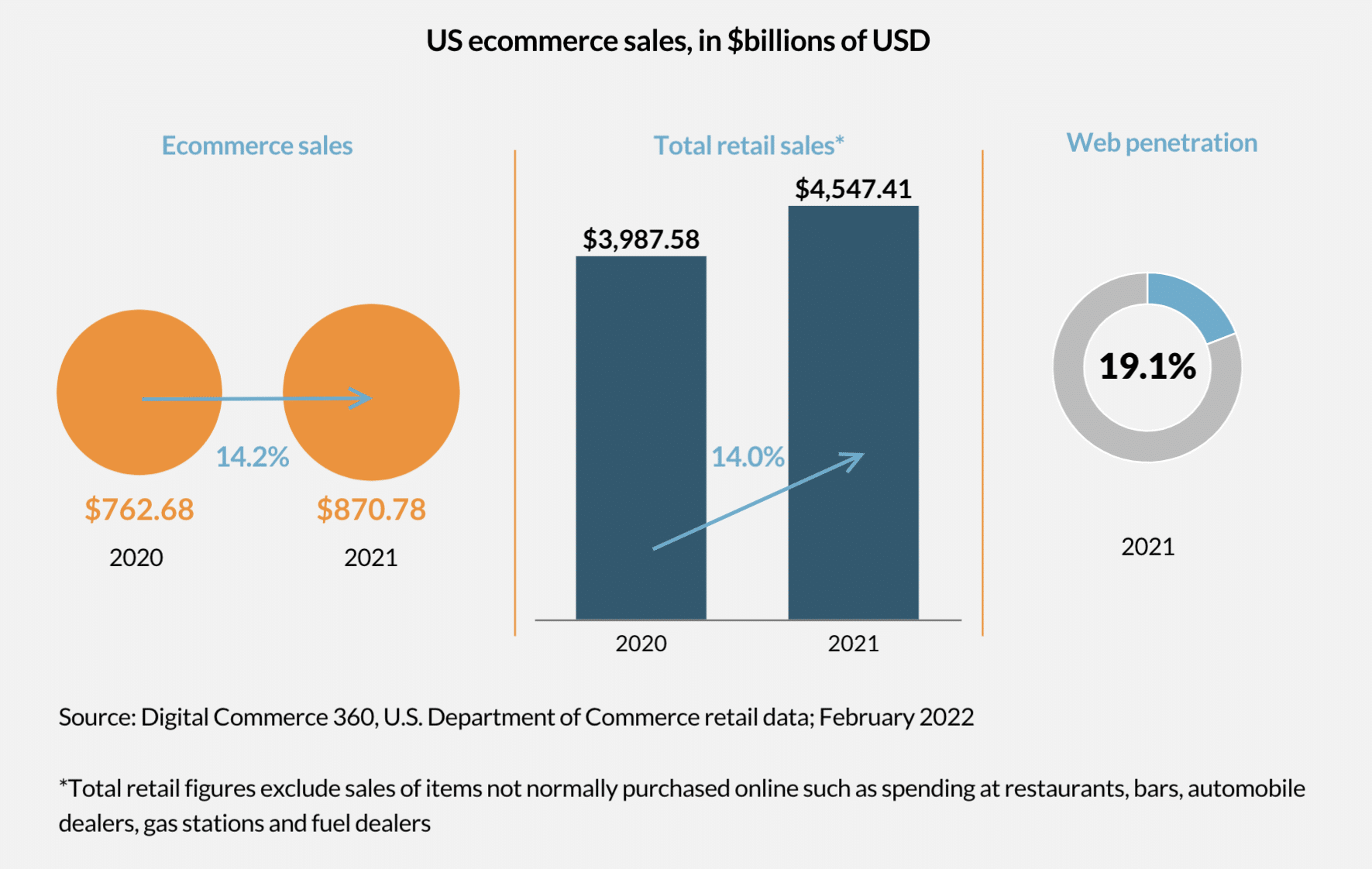
But while sales are rising quickly, the quality of customer experiences (CX) is falling behind. Research firm Forrester’s latest US Customer Experience Index has revealed that overall CX quality in the US has fallen back to early-2020 levels, reversing gains made in 2021.
Much of the current dissatisfaction can be traced back to poor fulfillment experiences. According to the Baymard Institute’s study on cart abandonment, 48% of shoppers abandon sales because of excessive shipping costs and other fees. Also, 22% of shoppers abandon their carts when delivery times are too slow. Customer loyalty is also impacted by late and inaccurate deliveries as well.
However, effective order management is about fulfilling orders and getting products to customers in the most efficient and cost-effective way. A modern OMS application can vastly improve the overall fulfillment experience for customers by eliminating tedious and error-prone manual processes, automating important tasks, and helping to track and sync orders across the supply network, maintain optimal inventory levels, and manage the packing and shipping of orders. For mid-market and enterprise brands with complex retail operations, enhanced speed and efficiency can drastically lower fulfillment costs, boost margins, and improve customer loyalty and retention, ultimately leading to greater customer lifetime value.
[toc-embed headline=”OMS 101: Breaking Down Everything You Need to Know About Order Management System Software”]
OMS 101: Breaking Down Everything You Need to Know About Order Management System Software
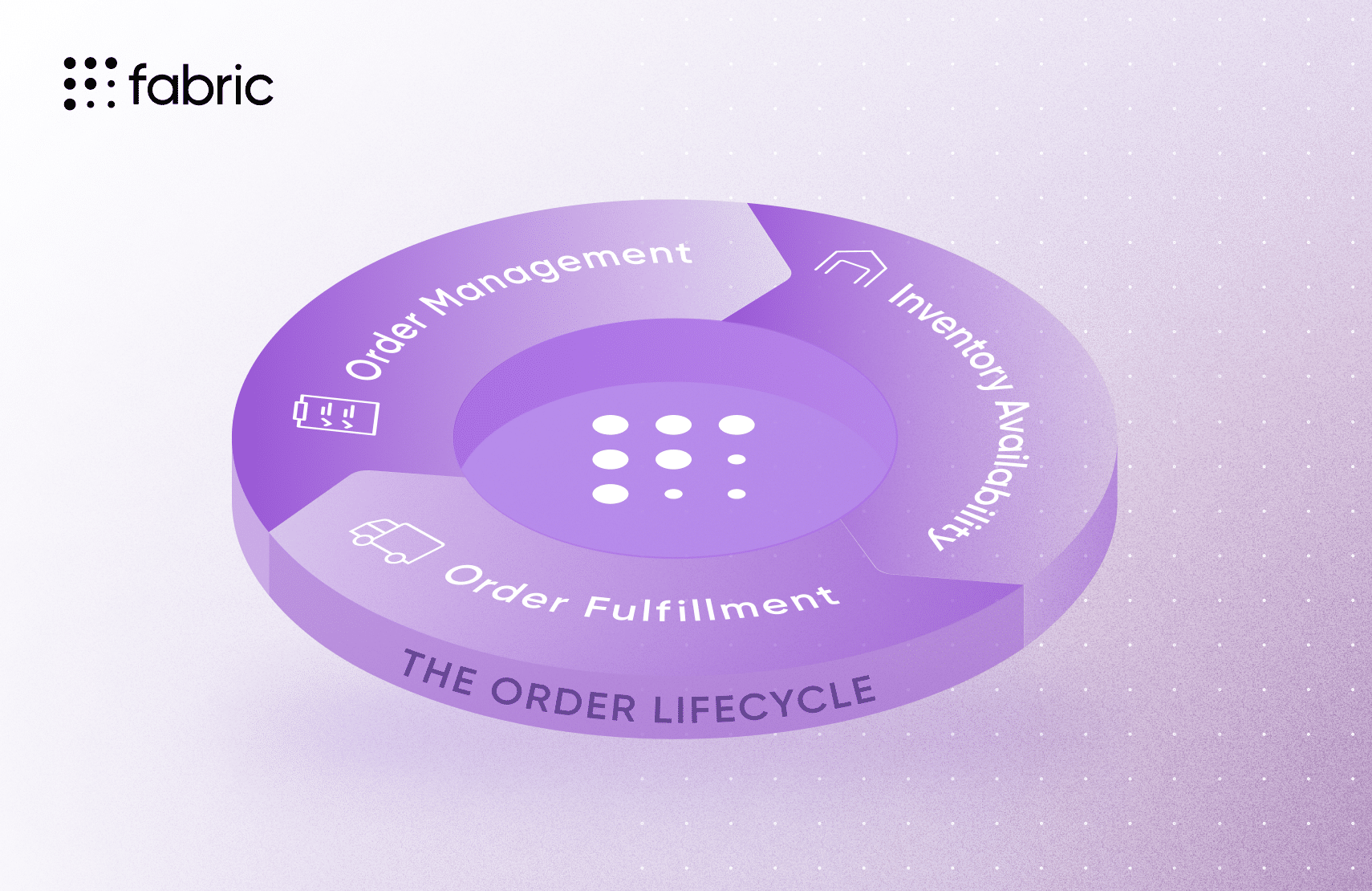
What is OMS software and why is it important for enterprise businesses?
An order management system (OMS) is a software solution that lets retailers manage the order lifecycle from when an order is placed to the completion of the fulfillment process. The software not only enables end-to-end order management orchestration but also provides a centralized interface to view and manage inventory and orders across the retail supply chain.
For mid-market and enterprise businesses with complex retail operations, modern OMS software applications are powered by application programming interfaces (APIs), which allow different applications to talk to each other, exchange data, and share services. APIs allow OMS software to connect to other systems to sync inventory and push order details across a large e-commerce ecosystem.
Who uses OMS software?
Omnichannel retailers looking to scale order fulfillment
Companies that want to scale orders across multiple channels need a modern OMS that’s capable of fulfilling and shipping inventory from anywhere. Without one, they are stuck with inefficient and antiquated manual processes that often involve the archaic use of spreadsheets. An OMS can connect to different sales channels and provide a more intuitive interface for managing orders.
Enterprises looking to go beyond their ERP system
Enterprise resource planning (ERP) systems can provide organizations with extensive functionality, but they are not suited for omnichannel order management. Companies with an ERP may need a standalone OMS solution that’s more robust and customizable to round out any missing features. These systems work well together as the APIs from a modern OMS can create a smooth ERP integration.
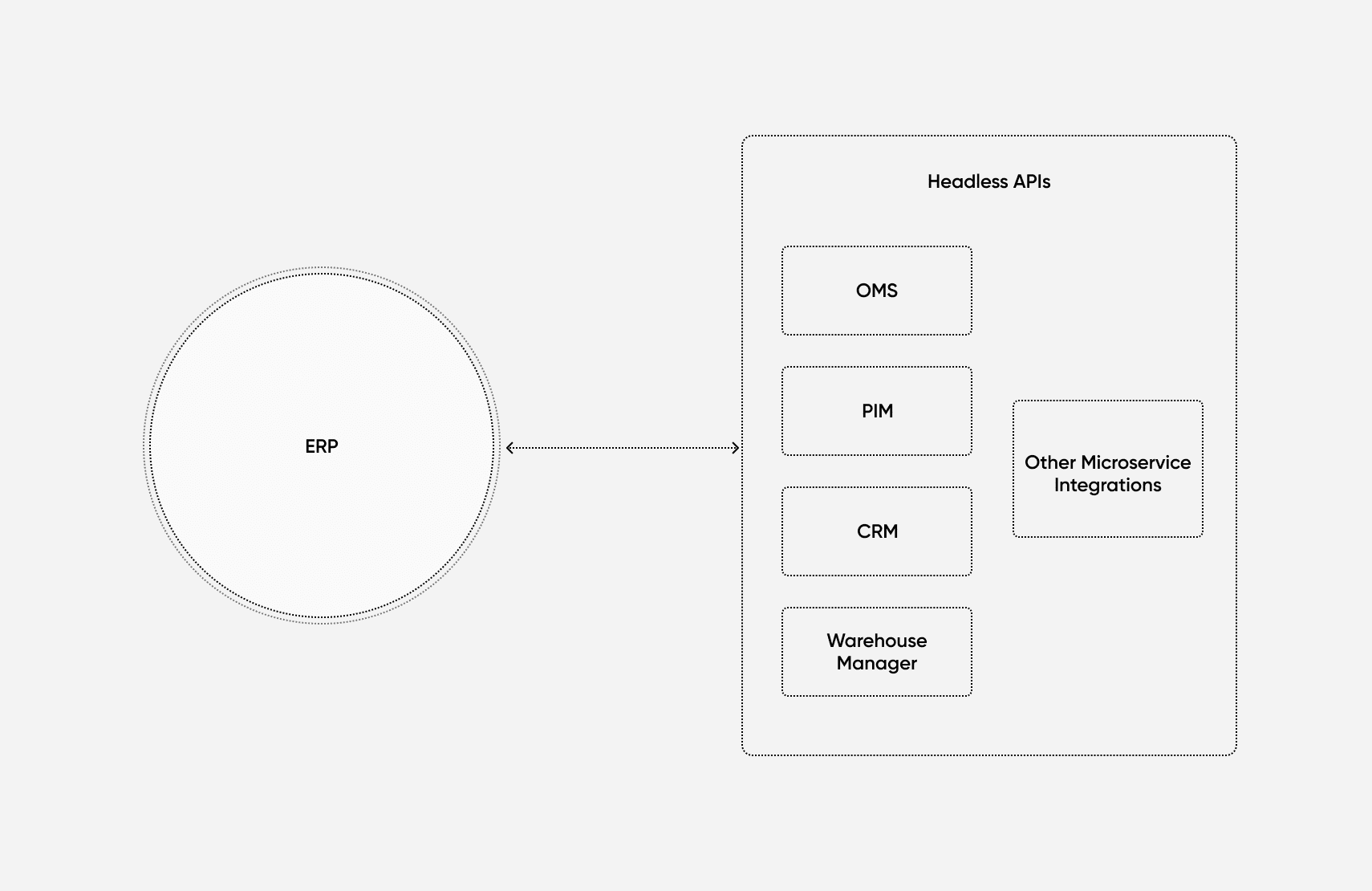
Integrating a classic ERP with modern e-commerce solutions, such as headless APIs, improves the accuracy of your data and ensures a smooth, real-time flow of information between each channel, department, and module.
Retailers and brands that have outgrown their monolithic platform OMS
As a company expands, it may outgrow the order management functionality built into its e-commerce platform. Adopting a standalone OMS solution can provide more features, including multi-channel fulfillment and a suite of APIs.
A dedicated OMS is also critical in switching to a microservices architecture. With this approach to e-commerce technology, all backend commerce functionality is broken down into individual components.
Instead of a single e-commerce platform that builds the frontend, processes orders, and manages product information, different applications perform each of these functions separately but are seamlessly connected via APIs to create a modern, modular tech stack. For example, a content management system (CMS), storefront, product information manager (PIM), and an intelligent pricing engine would all be connected together. This would require an OMS with the necessary APIs to connect with the other parts of the system.
[toc-embed headline=”How OMS Software Works”]
How OMS Software Works
The first function of OMS software is to keep an accurate record of inventory throughout the retail supply chain. This includes inventory held at physical stores, warehouses, in transit, and at any third-party suppliers. The system syncs this information across all sales channels to ensure inventory levels are accurate at all times and provides the visibility into global availability that businesses require.
The primary job of an OMS is to facilitate order fulfillment. The exact process varies depending on the specific software and business but generally follows various steps below.
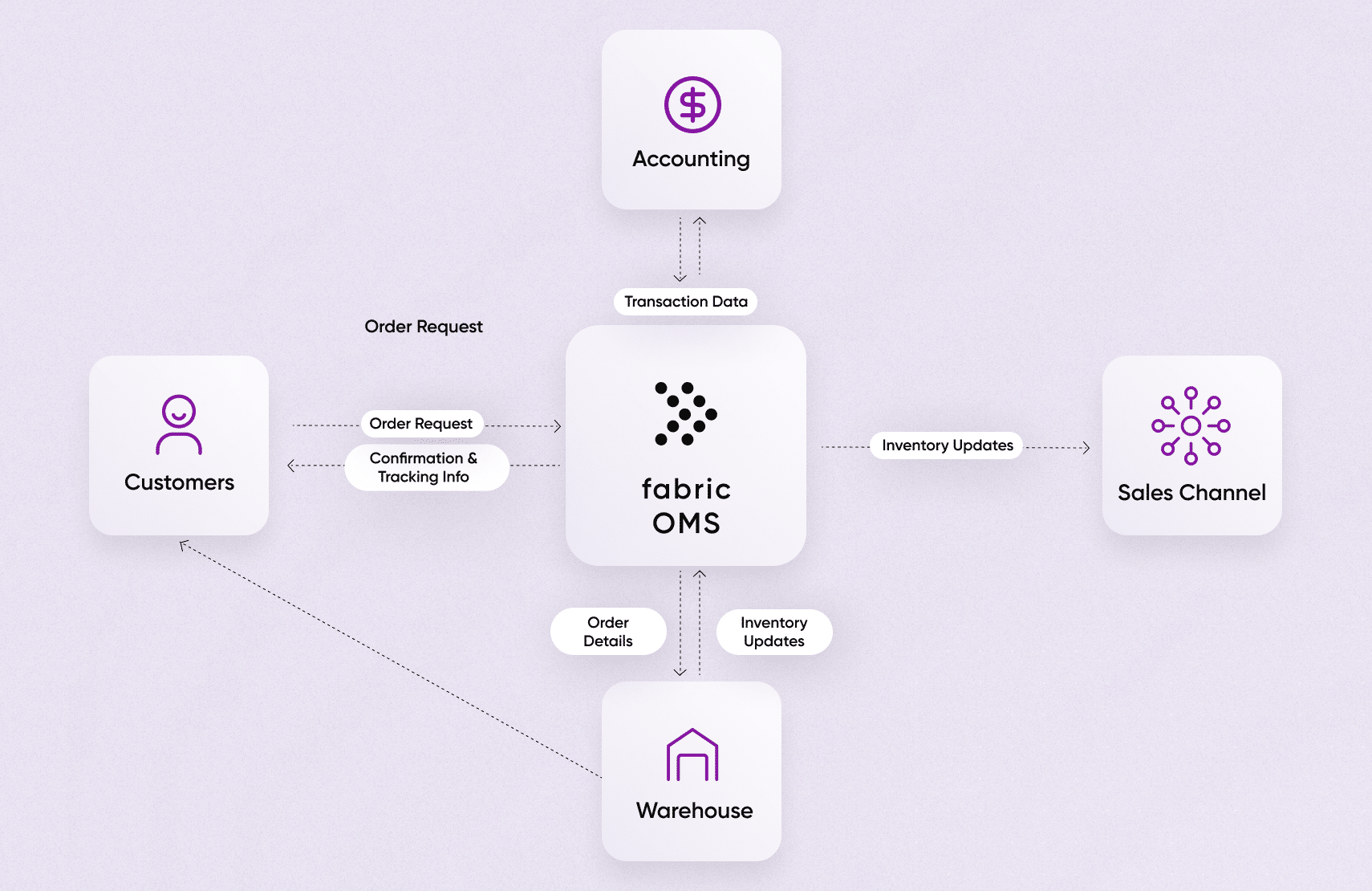
A simple illustration of basic order management system functions.
1. A customer places an order through a sales channel. The OMS adds their information to a customer profile. (This lets companies track customer order history and shipping and payment preferences.)
2. Once the payment is processed, the OMS uses real-time data to update inventory levels across all platforms. It then generates a receipt and sends it to the customer. Simultaneously, the system updates the accounting system with details from the sale.
3. Next, the OMS uses the order details to route the order to the appropriate warehouse. It does so by analyzing the available stock and delivery destination. At the warehouse, the order is picked, packed, and double-checked for accuracy.
4. If an item is out-of-stock, the OMS communicates with suppliers to send additional inventory to the warehouse. If there is a delay in the shipment, the customer receives a notification informing them of the delay.
5. After the order is packed, it is shipped to the customer via third-party shipping software. The OMS software sends a confirmation email to the customer with the tracking information.
6. Once the order arrives, the OMS sends a follow-up email ensuring the order was accurate and to the customer’s satisfaction. This message also includes steps to contact customer service if there is an issue.
7. If the customer decides they want to return an order, the OMS software quickly processes a refund request. It then passes the information to the appropriate party to start the return process.
[toc-embed headline=”3 Types of Order Management Systems”]
3 Types of Order Management Systems
There are a variety of tools and methods organizations can use for order management. The most common options are:
- Manual order management
- Order management functionality built into an e-commerce platform
- Standalone OMS software
Each approach offers a different level of functionality and drastically alters the order management process flow. Manual tools and e-commerce platforms are best suited for companies with simple fulfillment needs.
Companies with complex logistics operations and a higher number of orders need the feature-rich capabilities of a standalone OMS. Below we will discuss how each of these methods works.
Option 1: Manual order management
While not technically software, manual order management remains a popular choice for many businesses. It is more common among smaller brands but is also prevalent amongst companies that process multi-channel orders. These businesses have not adopted modern systems and are left performing labor-intensive manual processes.
Most of the work is done through spreadsheets. Companies will compile orders from different channels into a program like Microsoft Excel or Google Sheets. These spreadsheets serve as the hub for visualizing all orders and pushing them through the fulfillment process.
The end-to-end process is not only resource-intensive but is also prone to human error. Mistakes are often made when manually recording orders; additionally, the approach is not scalable. Increases in order volume will equal a proportional increase in the effort required to fulfill those orders.
To summarize, manual order management is not a viable option for most sellers when they reach a certain size. Smaller “mom-and-pop” shops that process few orders may be able to manage, but larger enterprises or businesses that want to scale and maximize efficiency require more advanced order management capabilities.
Option 2: OMS inside an e-commerce platform
Most monolithic e-commerce platforms have an OMS built into the system. Netsuite provides an example of a platform-native OMS. These systems are more efficient than manual order management and can capture and manage orders with a simple backend interface. Businesses can also monitor and update inventory.
Platform-native OMS software works great for processing orders through a direct-to-consumer (D2C) e-commerce site. The software is tightly coupled with the e-commerce system and is specifically designed to handle orders from a single website.
Merchants can use applications and other extensions to integrate multichannel order management into their systems. That said, this option does not provide the same functionality as a standalone OMS that’s purpose-built for multi-channel fulfillment.
Option 3: Standalone OMS
A standalone OMS exists as its own independent platform. It is often the choice for companies seeking a comprehensive tool for order management. Modern software can follow a modular architecture, making it more compatible with other parts of an e-commerce technology stack.
Beyond robust feature sets and intuitive user interfaces (UIs) that allow users to view inventory across all locations from a single source of truth, modern OMS applications can seamlessly manage orders from multiple channels with real-time updates.
Businesses can work more efficiently by automating repetitive tasks and streamlining workflows, while cloud-native and microservices-based architecture provides the flexibility, scalability, and customizability that mid-market and enterprise retailers need to tackle complicated fulfillment challenges. Furthermore, an OMS with distributed order management capabilities is designed for omnichannel order fulfillment and is powered by APIs to offer unlimited extensibility.
[toc-embed headline=”Traditional OMS vs Distributed Order Management (DOM)”]
Traditional OMS vs Distributed Order Management (DOM)
With the growing complexity of retail operations in e-commerce, no conversation about order management is complete without discussing distributed order management or DOM and how it compares with traditional OMS applications.
Traditional OMS for simple fulfillment models
Standard—or “traditional”—OMS software is meant to support simple retail operations, which can generally mean a single sales channel and one or two fulfillment locations. As such, these solutions can view and manage orders from one source at a time and are built for traditional unilateral order and fulfillment.
The disadvantages to using a traditional OMS become apparent as businesses scale and attempt to integrate additional sales channels to provide an omnichannel shopping experience for the customer. Because of its limited capabilities of viewing and syncing inventory across a growing network, this often leads to low product availability, overselling, and frequent out-of-stock situations, as well as unnecessarily complicated return and exchange procedures that involve multiple steps for customers to complete.
DOM for omnichannel fulfillment models
In contrast, DOM is specifically designed for omnichannel order management. It enables traditional order processing plus the addition of advanced order-routing and logic-based rules that determine which fulfillment location is the optimal choice for fulfilling an order for a customer.
DOM supports retailers with larger fulfillment networks and more sales channels and can handle complex fulfillment operations, including multi-channel customer journeys such as buy-online-pickup-in-store (BOPIS), ship-from-store, and ship-to-store. It can also offer robust contact center support and seamlessly provide network aggregation with enterprise inventory visibility across all stores, fulfillment centers, and distribution centers.
In other words, a DOM system is designed to orchestrate and optimize the customer order fulfillment process in an omnichannel environment while aiming for the lowest possible cost to fulfill that order. To learn more about how DOM works, check out this article here.
[toc-embed headline=”7 Must-Have Order Management System Features in 2022″]
7 Must-Have Order Management System Features in 2022
The extraordinary rise of headless commerce has resulted in an explosion of innovation in the field of order management. Although the order management market is currently dominated by legacy software-as-a-service (SaaS) providers such as Manhattan OMS and IBM Sterling, the industry is rapidly shifting towards API-first, cloud-native, and modular applications that boast new state-of-the-art, multitenant architecture.
However, not all SaaS vendors are created equal. Here are 7 of the most important features businesses should look for when evaluating different OMS options:
1. Order lifecycle management

With rapid advancements in OMS technology including DOM capabilities, retailers and brands should employ a modern OMS that has the ability to track and manage orders from order placement to post-delivery services. For example, software that offers omnichannel order visibility means that the system should be able to aggregate orders from any channel into a single source of truth, which can give retailers a full 360-degree view of customer purchases.
Managing orders with OMS software should be more efficient as well. Some important features to look for include the ability to:
- import orders in bulk to eliminate individual order entry
- assign custom attributes to orders for better categorization and organization
- provide estimated delivery dates to customers for better transparency
- make changes to orders on behalf of the customer
2. Returns and refunds

For many e-commerce businesses, reverse logistics are capital-intensive activities that can be costly and cumbersome. Left unchecked, the financial impact of handling returns, servicing, refurbishment, and/or recycling can quickly spiral out of control and lead to diminishing margins.
A modern OMS can help alleviate some of these pain points with advanced capabilities. For example, offering customers an easy return and fully automated refund process can reduce friction and streamline processes. Furthermore, having a returns policy setting in the OMS user interface (UI) can allow a company to easily set business rules for accepting and processing returns and refunds.
3. Inventory visibility
OMS software that’s built with DOM capabilities should be equipped with powerful tools for greater inventory visibility across the supply chain. Whether products are in transit, on-shelf, or located in distribution centers, plants, stock locations, or 3PLs, a modern OMS should provide retailers with a real-time, 360-degree view of inventory across the entire organization.
In addition to global and local inventory availability, retailers should also be able to view and track available-to-promise (ATP) inventory accurately. ATP refers to the projected amount of inventory a business has in stock that’s ready to sell and is not allocated for existing customer orders. Displaying the exact ATP stock in the storefront provides customers full transparency into what’s available to purchase at any given time.
4. Inventory controls
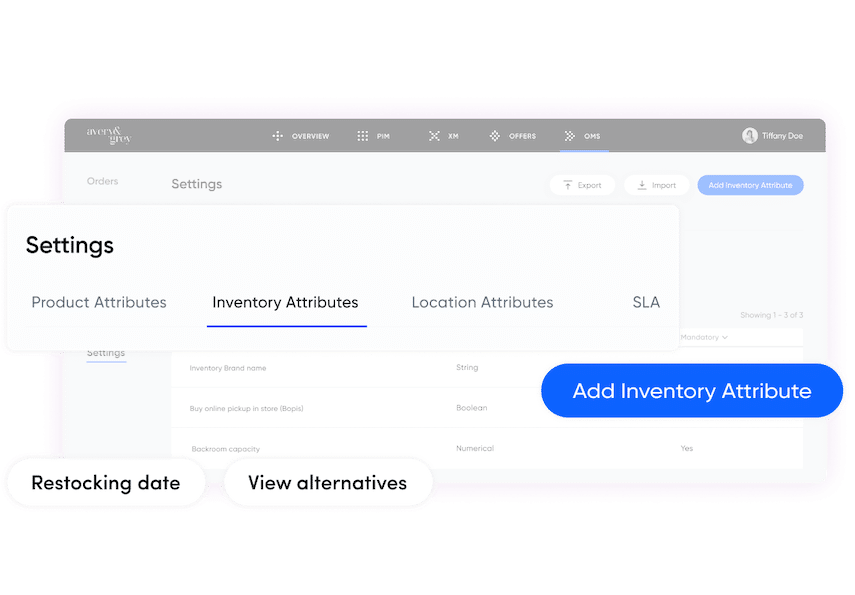
Greater control begins with better categorization and organization. A modern OMS provides the ability to assign custom attributes, locate items, pool inventory, and control the availability of stock to sell in each channel, market, or region. An OMS software can also be used to:
- set reorder points when stock runs low or when a safety stock level is triggered
- plan for sales and stock-outs
- and help to eliminate dead stock (or unsold inventory).
5. Pre-orders and backorders

To improve demand forecasting and plan for future inventory requirements, pre-order and backorder engines are crucial OMS software features that businesses should demand from their SaaS providers. For example, offering customers pre-orders for products not only allows companies to prepare better the amount of inventory to procure for an upcoming launch, but it can also help to build hype for a new product release as well.
Backorder capabilities are great when a business runs out of stock. Having the ability to capture a sale and retain a customer that would otherwise abandon their transaction is hugely valuable for any e-commerce business. More advanced OMS applications can automatically convert orders to backorders when stock runs out and then instantly release them from the backorder designation when the stock is replenished. Retailers should also be able to limit backorders to a specific quantity setting.
6. Fulfillment optimization
Another key feature for a modern OMS to have is fulfillment optimization, which uses order fulfillment logic (OFL), or business rules, to optimize order fulfillment. OFL can be configured to apply different business rules to help improve a company’s sell-through rates.
For example, configuring inventory segmentation can allow a business to assign inventory to specific customer segments like VIPs or new customers. Inventory reservation is another feature that can track the virtual quantities of inventory for a specific demand. And configuring picking location prioritization can help companies specify if orders should always be picked from the closest facility in stock or by a rank of facilities in the order that is first in stock.
7. Flexible fulfillment options
This important feature for modern OMS applications is pretty self-explanatory. With the myriad of ways to sell products today, businesses should have flexible fulfillment options to support different sales models, including BOPIS, store fulfillment, D2C order fulfillment, and same-day delivery, to name a few.
[toc-embed headline=”More Key Features To Look For in An OMS”]
More Key Features To Look For in An OMS
In addition to the must-have features mentioned above, modern OMS applications should provide retailers with even more functionality.
The order fulfillment process can be complex for mid-market and enterprise brands, especially those with operations that sell through multiple channels. Before choosing an OMS solution, companies should carefully consider their specific business requirements and how they will use the platform. Below are additional features that businesses might want to consider when evaluating SaaS applications.
Seamless integrations with WMS software and other systems
When researching OMS software, it’s important to consider how the system will impact other tech stack components. If the OMS replaces another system one-to-one, companies must know how to transfer data and processes between the two systems.
No matter what system the OMS replaces, it must integrate with other tools such as an ERP, customer relationship management (CRM) system, and accounting systems, to name a few. Some software comes with pre-built connections for popular third-party services. Although that is useful, it is more important that the OMS has an API. With APIs, businesses can build custom connections to other systems.
For example, a modern OMS solution should integrate seamlessly with a warehouse management system (WMS) through APIs. A WMS tracks nearly all day-to-day operations of a particular warehouse. Whether a business uses an external WMS or a platform that has built-in warehouse management functionality, an OMS should be able to create instances for multiple warehouses and specify which sales channels they will serve.
A real-time connection between an OMS and WMS should also provide notifications when stock is running low. By connecting these important systems, businesses can improve supply chain efficiency and reduce stockouts, thereby lowering costs and saving time through the fulfillment process.
Flexibility to configure business rules
In retail, businesses need to constantly adapt to changing market conditions. This includes order changes, supplier availability issues, and spikes in demand, to name a few.
The ability to configure OFL, or logic-based rules, offers businesses the flexibility to adapt to different challenges quickly. For example, conditional sourcing specifies rules to automate sourcing decisions. Rank-based sourcing can specify if orders should be delivered by the closest or highest-ranking facility. And when an order is out of stock at a location, “bounce” reallocation can reallocate the order to a different location that’s eligible to source the order from.
Scalability
A modern OMS should be built for mass scalability across different distributed commerce models, including newer buy-online-pickup-in-store (BOPIS), ship-to-store (for store pick up or replenishment), and store fulfillment (as mini distribution centers) models. And as a business grows, the solution should also be capable of handling large spikes in website traffic and increases in the quantity of transactions, SKUs, sales channels, fulfillment locations, etc…
Support for supply chain complexity
The complexity of a supply chain plays a big part in determining what features companies should look for in an OMS. If a business has multiple warehouses, it’ll need a way to integrate the different systems seamlessly. For instance, businesses with brick-and-mortar locations may offer in-store pickup, requiring an OMS that allows pickup as a fulfillment method.
As mentioned, fulfillment optimization with OFL provides an efficient way to route orders to the best warehouse for speedy delivery is also an important consideration. However, simple configurations—rather than code—mean that changes to logic-based rules would not require nearly as many development resources, lowering the total cost of ownership (TCO) of the software.
Powerful APIs
Modern OMS applications powered by APIs can create real-time connections with other parts of an e-commerce tech stack. These can include an intelligent pricing engine, a product information manager (PIM), or a dropshipping platform. They can also connect to third-party logistics (3PL) services and external vendors to ensure efficiency for all logistics processes.
Businesses can use APIs to perform a myriad of functions. For example, order APIs can be used to add shipment information to orders, cancel orders, and return orders. Meanwhile, inventory APIs can perform bulk inventory updates, query inventory by location, and more.
Modularity
Going hand-in-hand with APIs is modularity. APIs provide companies with the freedom to pick and choose different backend services, otherwise known as e-commerce modules. Modularity allows businesses to select the surrounding services of their choice, without being obliged to implement a pre-packaged monolithic e-commerce platform. This flexibility allows changes or updates to be made to specific modules without impacting other services in the backend.
Optimization of workflows
OMS software features workflows that companies can use to automate parts of the fulfillment process. For example, an OMS can automatically send a shipping confirmation email once tracking details are added to the system. Or the system can reconcile inventory for any canceled orders.
[toc-embed headline=”What are the Biggest Benefits of a Modern and Scalable OMS Software?”]
What are the Biggest Benefits of a Modern and Scalable OMS Software?
The importance of using a modern and scalable OMS solution can not be understated. Fast-growing e-commerce brands need to streamline their fulfillment operations to save time, lower costs, and make data-driven decisions that produce positive and tangible results.
In addition to drastically simplifying inventory and order management functions, businesses can enjoy a host of other benefits, including more automation and fewer errors in order processing, optimized fulfillment for multiple sales channels, support for flexible shipping and delivery options, more inventory accuracy and visibility, and improved customer experiences, to name a few. We’ll dive into some of these key benefits below:
Achieve seamless omnichannel fulfillment
An OMS software with DOM capabilities allows retailers to sell on multiple channels more efficiently by centralizing orders across channels. Doing so ensures orders are routed properly and that all inventory levels are updated in real-time.
Without a centralized OMS, companies have two options for multi-channel fulfillment. First, they can use a disparate set of siloed systems. Or, they can try to compile orders from every channel into a spreadsheet. However, both of these methods are ineffective and not scalable.
Automate taxing and tedious tasks
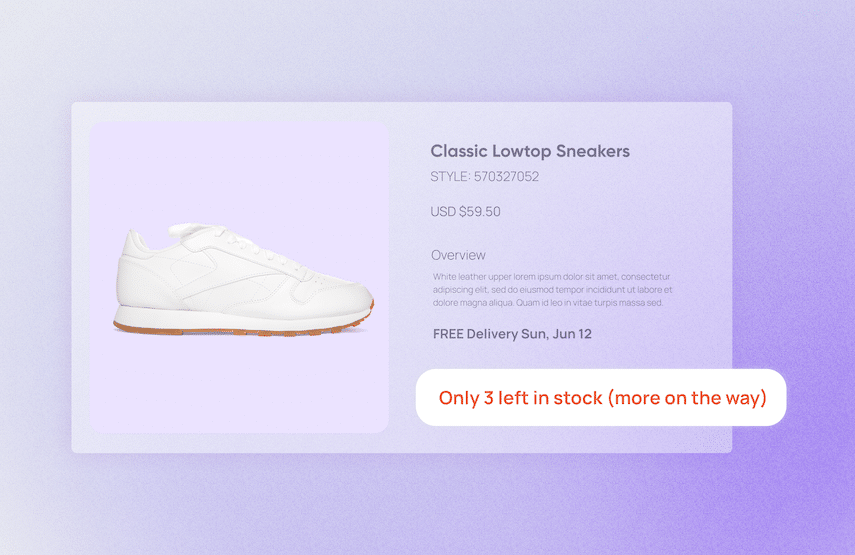
OMS software streamlines order fulfillment by automating different processes. The system can capture order and payment details, update inventory levels, and send notifications for low stock levels. Automating these processes lowers labor costs and frees team members to focus on creating greater customer experiences.
Drastically reduce errors in order processing
OMS software improves collaboration between different departments. With a centralized system, many of the manual steps needed for groups to work together are no longer required.
By eliminating manual tasks, OMS software reduces the number of errors in the order management process. Instead of an employee recording orders, the OMS can capture and distribute order details with vastly better accuracy.
Instantly improve inventory availability
Connecting orders and inventory in the same system improves inventory availability. It helps prevent companies from selling products that are not available. Aggregating demand using pre-ordering and backordering mechanisms can help businesses with demand forecasting, which can help lead to less overstocking of products and more efficient use of warehouse space.
Provide more flexible shipping and delivery options to your customers
Another way to win customer loyalty is through fast and flexible shipping and delivery options. 57% of buyers say that they’re more loyal to brands that offer same-day shipping and delivery. With OMS software, each step of the fulfillment journey is tracked and executed accurately, allowing businesses to meet consumers’ growing expectations.
Improve the overall customer experience
Customers can become frustrated when they receive an out-of-stock notification after adding an item to their cart. Thus it is better to be transparent with customers, so they aren’t wasting their time shopping for out-of-stock merchandise.
OMS software helps retailers provide a better customer experience across all channels. Customers can enjoy fewer errors and more transparency in the purchasing process, including transparency into ATP inventory on the product detail page (PDP). With robust tracking, it is easy to see the status of an order from start to finish. The streamlined fulfillment process also leads to faster deliveries.
[toc-embed headline=”Streamline Omnichannel Order Fulfillment with fabric OMS”]
Streamline Omnichannel Order Fulfillment with fabric OMS
Efficient order management is essential to creating a great customer experience. Companies can improve their order fulfillment process by using OMS software. The right system can help improve inventory visibility and availability, eliminate errors, and deliver products faster.
fabric OMS is a DOM system that is designed to give mid-market and enterprise customers the post-purchase experience expected from world-class retailers. It provides a centralized hub for information by combining orders, inventory, and customer data in a single place. Businesses can streamline the fulfillment process by automating tasks and reducing the errors caused by human input.
Our OMS integrates seamlessly with other parts of your e-commerce infrastructure and helps business users to collaborate more efficiently. Using OFL, you can automatically route orders to the best warehouse to ensure deliveries are as quick as possible. And with a robust suite of e-commerce APIs, you can easily connect fabric’s OMS to your 3PL or any other service or sales channel.
If you want to learn more about how our market-leading OMS application can help you simplify inventory and order management, get in touch with us here.

Product @ fabric. Previously @ EMAAR NEXT, Groupon, and NorAm International Partners.

